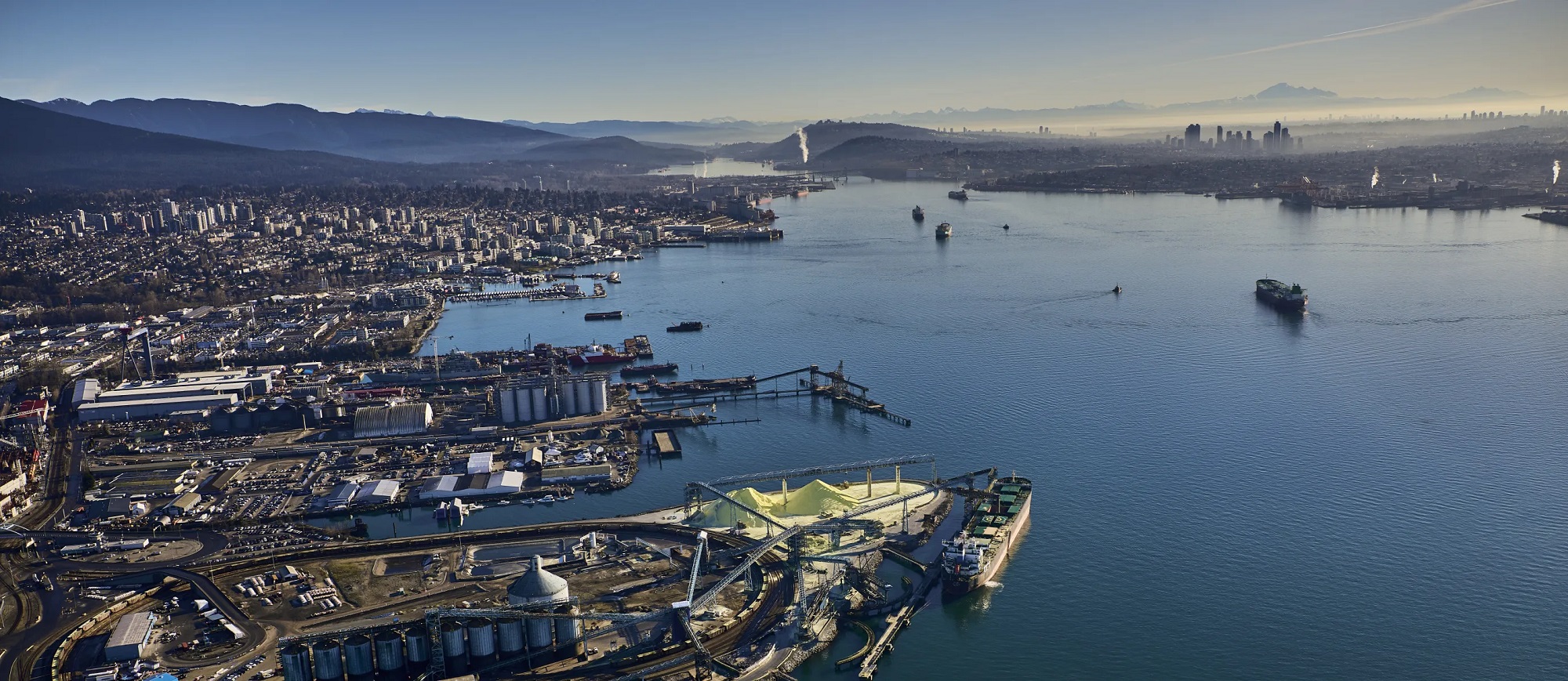The Port of Vancouver announced it moved record volumes of Canadian trade in the first six months of 2025, delivering vast quantities of made-in-Canada grain, energy and fertilizer exports to diverse world markets against a challenging geopolitical backdrop.
The port’s mid-year cargo statistics show a 13% increase in cargo moved between January and June 2025, compared to the same six-month period last year—with a record of more than 85 million metric tonnes (MMT) of cargo handled.
Port of Vancouver terminals handled nearly 20% more international trade than a year ago, as surging exports of Canadian crude, canola oil, grain, potash and coal to markets worldwide. Containerized trade over the first half of 2025 remained steady, while cruise and auto volumes eased following record performances in 2024.
“Canadians and their businesses depend on the Port of Vancouver to buy and sell the products they manufacture, farm, mine and stock their shelves with,” said Peter Xotta, President and CEO of the Vancouver Fraser Port Authority.
“As Canadians navigate a moment in time like no other, I want to acknowledge the port community and our supply chain partners for rising to the occasion and moving record trade volumes so far this year. The Port of Vancouver has a critical role to play in meeting the moment as Canadian businesses seek to sell more of their products to more customers outside of the U.S.”
The Port of Vancouver is Canada’s largest and most diversified port—already connecting Canada with more than 170 global economies and moving as much cargo as Canada’s next five largest ports combined. More than 80% of the trade through the Port of Vancouver is Canadian trade with countries other than the U.S.
Moving Canadian commodities
Bulk exports of Canadian commodities were strong in the first half of the year, including record volumes of crude oil exports, and robust volumes of canola oil, grain and potash exports from Manitoba, Saskatchewan and Alberta.
- Crude oil exports surged by 365% to almost 12 MMT, with Trans Mountain’s expanded pipeline and terminal coming into operation in May 2024. Approximately 60% of these record volumes went to China, while other markets including the U.S., South Korea, Singapore and Japan all surpassed their full-year 2024 volumes early in the first half of 2025.
- Canola oil exports were up 72% to 0.7 MMT in the first six months of 2025, as the port connected Canadian producers with new overseas markets and helped offset lower U.S. and Chinese demand. Export markets for canola oil grown throughout Western Canada expanded from four in 2024 (China, U.S., South Korea, Peru) to 12 in the first half of 2025, with new and returning markets including Belgium, Malaysia and Mexico.
- Port operators also moved near record volumes of bulk exports of Canadian grain, fertilizer (potash, sulphur) and coal. Grain was up 8% to reach its second highest half year on volumes on record (behind 2021), including wheat up 16% and canola seed up 12%. Increased volumes of canola seed went to Japan, while new markets such as Mexico, Netherlands, France, Bangladesh, Bulgaria helped offset the impact of Chinese tariffs.
Potash was up 26% to reach its second highest half-year result on record after 2019 as the fertilizer product recovered from a slowdown in 2024, while sulphur was up 5% and coal down 2%.
“For decades, and prior to tariff threats, along with our partners we’ve been working hard to grow trade capacity to meet demand. Today, our growth plans and partnerships are purpose built to help Canada rise to the occasion and get made-in-Canada products to more customers,” said Mr. Xotta.
“We all win when we work together. For example, we’re using new tech and tools to facilitate thousands of ship movements a year—allowing us to improve visibility in how goods are moving through the port, better coordinate with supply chain partners and add capacity. Our Active Vessel Traffic Management Program, combined with ongoing collaboration, has meant the port has been able to smoothly integrate Trans Mountain’s expanded volumes over the past year while also enabling CN to increase rail service to the busy North Shore trade area by 10%.”
Container sector stable
The Port of Vancouver’s four container terminals moved 1.88 million 20-foot equivalent units (or TEUs) at mid-2025, with mid-year volume growth of 6% driven largely by Canadian trade. It was the second highest volume of containers moved at mid-year, after 2021’s record of 1.94 million TEU.
“Containerized trade—like the Canadian economy—has shown remarkable strength and resilience so far this year in the face of U.S. tariffs and global uncertainty,” said Mr. Xotta.
“More and more, we are seeing Canadian businesses turn to containers to securely trade goods with world markets. With containerized trade through the port on a long-term growth trajectory, Roberts Bank Terminal 2 is uniquely positioned to deliver for Canada. We are advancing towards a final investment decision soon for the nation-building project, which will unlock an additional $100 billion a year in West Coast trade capacity and enable Canadian businesses to win even greater market share overseas.”
(Photo of Burrard Inlet from Port of Vancouver)


